How to sell sustainability without selling out
David Karstad, April 23 2014
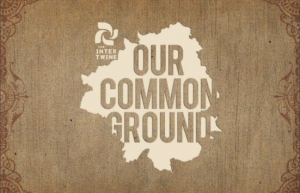 Passion. That’s one thing those of us active in the world of conservation don’t lack. Beyond logic and civic-mindedness, we FEEL the importance of our work.
Passion. That’s one thing those of us active in the world of conservation don’t lack. Beyond logic and civic-mindedness, we FEEL the importance of our work.
So why, for many of us, is it still such a struggle to tell our stories in compelling ways? To be heard in an oversaturated information marketplace?
It can be done -- my team and I here at Frank Creative have been doing this for years. Last spring, The Intertwine Alliance hired us to develop a unique campaign intended to meet this challenge.
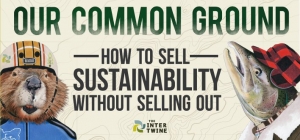 On Friday, I shared the campaign with webinar attendees from across the nation. Now you can see for yourself how we broke down the challenge, examined our options, and arrived at "Our Common Ground" -- a promotional campaign designed to sell sustainability without selling out.
On Friday, I shared the campaign with webinar attendees from across the nation. Now you can see for yourself how we broke down the challenge, examined our options, and arrived at "Our Common Ground" -- a promotional campaign designed to sell sustainability without selling out.
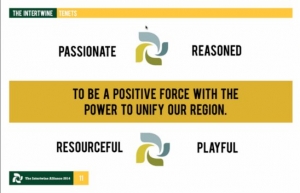 In our hour-long webinar, we explain how organizations like The Intertwine Alliance can join forces for greater Collective Impact, and do it in a way that can go toe to toe with the best brands in the market. We call it fighting fire with fire.
In our hour-long webinar, we explain how organizations like The Intertwine Alliance can join forces for greater Collective Impact, and do it in a way that can go toe to toe with the best brands in the market. We call it fighting fire with fire.
Click here to watch the webinar, and scroll down to see how we answered some burning questions from participants who tuned in from across the nation.
YOU ASK, WE ANSWER:
What is the timeline for these various campaigns?
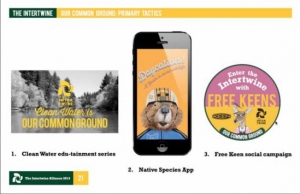 Funding levels dictate, but the next 12 to 16 months is what we're shooting for. Right now it looks like our Daycation app will be the first piece that we'll release, followed by the social media campaign. And then hopefully within 18 months, we can build to what I'd call the tipping point, to get those animated spots out to the wide audience this campaign deserves.
Funding levels dictate, but the next 12 to 16 months is what we're shooting for. Right now it looks like our Daycation app will be the first piece that we'll release, followed by the social media campaign. And then hopefully within 18 months, we can build to what I'd call the tipping point, to get those animated spots out to the wide audience this campaign deserves.
How will you measure the success of the campaign?
Awareness and education are our first true two outcomes we're looking at. The Intertwine is starting at a pretty low awareness level, so we can use polling to get to those, with our partners’ assistance.
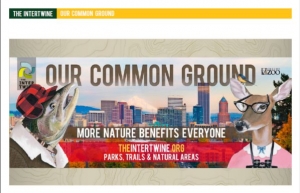 We also have the opportunity for rich insights based on our Daycation app, by tracking subjective data (like interactions between users) as well as hard metrics like the number of downloads, photos uploaded, trips completed, etc.
We also have the opportunity for rich insights based on our Daycation app, by tracking subjective data (like interactions between users) as well as hard metrics like the number of downloads, photos uploaded, trips completed, etc.
But the longer term goal for all our partners is true behavior change. We're trying to raise the collective understanding of all these issues to a new normal.
Right now, we gear up for every election cycle, spend money to get people to pay attention for six months and move a ballot issue six to seven points. And then we go away.
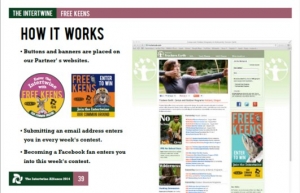 However, if we can brand more consistently, talk about these issues in between the election cycles, we can create understanding so that when the election comes, we only have to move the needle two or three points. Which costs a lot less money and a lot less energy.
However, if we can brand more consistently, talk about these issues in between the election cycles, we can create understanding so that when the election comes, we only have to move the needle two or three points. Which costs a lot less money and a lot less energy.
So ultimately, as a success measurement, that would be it: are we able to talk to the public through the ballot box and get the support we need?
What does a campaign like this cost, and how do you fund it?
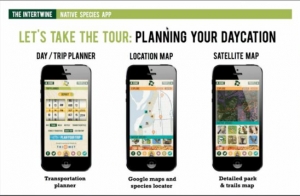 Each of one of these campaign strategies has their own cost to implement. For the KEEN project, they've already donated the shoes and we've done most of the art work up front to provide that to our partners, so that's a pretty low cost campaign.
Each of one of these campaign strategies has their own cost to implement. For the KEEN project, they've already donated the shoes and we've done most of the art work up front to provide that to our partners, so that's a pretty low cost campaign.
For the app, we budgeted about $150,000. Much of that goes to into the programming and development, but there are also some promotional dollars in there to get the word out -- teaming with TriMet to create some critical mass for the adoption.
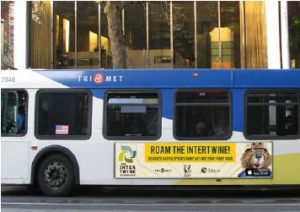 The animated spots obviously are bigger. We're talking hundreds of thousands of dollars to get those up and running and delivered. But then they have a shelf life. We're going to our corporate and municipal partners to create matching programs.
The animated spots obviously are bigger. We're talking hundreds of thousands of dollars to get those up and running and delivered. But then they have a shelf life. We're going to our corporate and municipal partners to create matching programs.
It really is this notion of collectively leveraging our small resources. Right now we’re throwing tiny pebbles out there and no one’s noticing us. We need to come together and throw a bigger boulder.
Can you talk more about ways to reach diverse audiences and underserved communities?
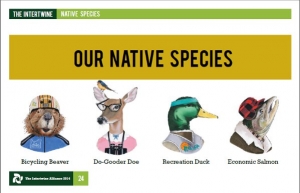 What I’ve presented here is the overall campaign template. We have our basic compass points, but those have nuances to them. So now we must start to identify which audiences we specifically want to reach, then go in and work with community groups, talk to people in the community. We’ll look at those issues that resonate, and have our spokes-species talk pointedly to those specific issues.
What I’ve presented here is the overall campaign template. We have our basic compass points, but those have nuances to them. So now we must start to identify which audiences we specifically want to reach, then go in and work with community groups, talk to people in the community. We’ll look at those issues that resonate, and have our spokes-species talk pointedly to those specific issues.
This is a diversity-driven campaign. It’s able to reach diverse audiences based upon many different motivations, many different psychographics, versus demographics. Understanding demographically who we're talking to and what those audiences prioritize is still important, but I think this concept allows us to deploy various messages under one umbrella campaign, and not have to reinvent the wheel every time we have to shift language or group.
Have you used focus groups or other methods to ensure that your spokes-species resonate with a diverse audience?
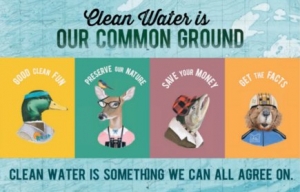 We have not, but certainly could with the budget to do so. We have vetted the animals with many of our partners. They were not selected in a vacuum. We had input from many groups. A good example is some Native groups we talked with felt that we should avoid animals like eagles, animals with greater iconic or religious status. And we respected that wish. Our four spokes-species are just the beginning. I would hope to create a whole family of animals because we've left a lot off the table.
We have not, but certainly could with the budget to do so. We have vetted the animals with many of our partners. They were not selected in a vacuum. We had input from many groups. A good example is some Native groups we talked with felt that we should avoid animals like eagles, animals with greater iconic or religious status. And we respected that wish. Our four spokes-species are just the beginning. I would hope to create a whole family of animals because we've left a lot off the table.

 David Karstad -- founder and creative director of
David Karstad -- founder and creative director of
Add new comment